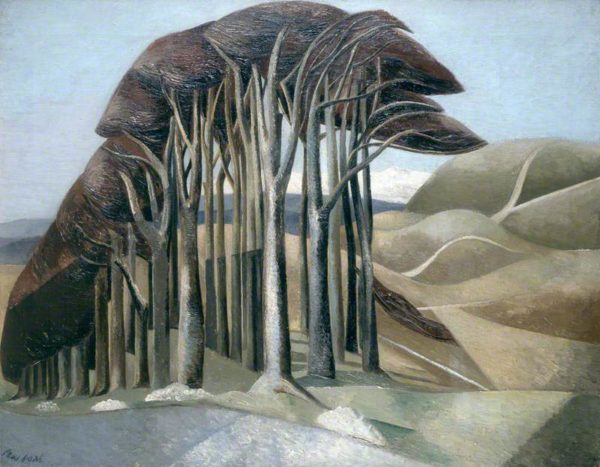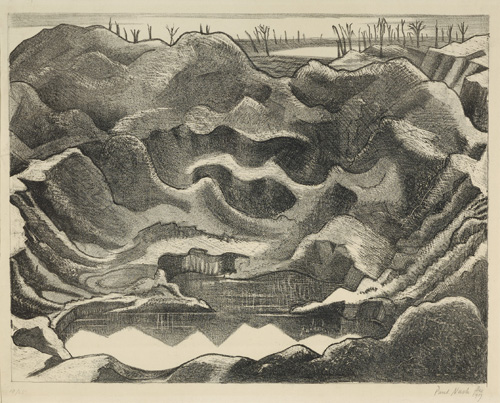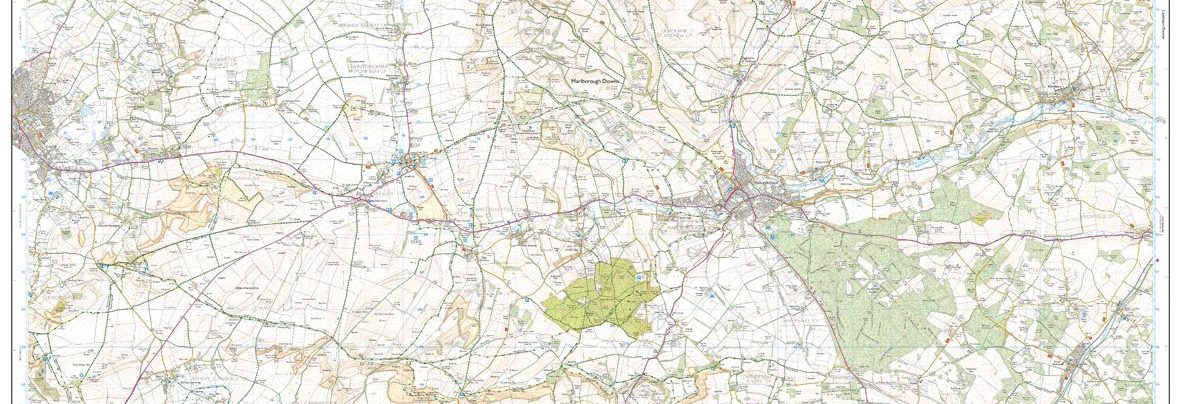Wood On The Downs
After Paul Nash
by Martin Malone
We have been here before. Uffington, Hackpen,
Grim’s Ditch, Ogbourne St.George, Wayland’s Smithy,
Sparshott Firs, Bishopstone and Barbury;
all the trodden way from Overton
to Beacon Hill. Each place its genius loci,
a favourite colour: Ash-Blue, Ochre,
Payne’s Grey, Terra-Verte, Lamp Black, Sienna.
But today you ditch your winter tones
and bid for late spring. The trees are in leaf,
the chalk from the downland reflects light
from a milder sky. Through field glasses
one sees a landscape that one can see
in no other way. Here, then, is yours:
the stiff cilia of trunks – a brown-fringed
platoon lost on Hill 60 – ghosts of the vortex,
the leaching colours of pending summer,
the breast, lumbar and hip curve of hill
prone upon the bed of Buckinghamshire.
And there I join you eighty years away,
with my Trojan girl; lifting her face
to mine in the dappled light of the wood.
We have been here before.

Paul Nash was a British landscape painter, a surrealist, pioneer of Modernism, an engraver and book illustrator. He was an official artist of two world wars. He was fascinated by landscapes with elements of ancient history such as stone circles iron age hill forts and burial mounds. Wiltshire, where I grew up, is full of them.
The poem lists places along the Ridgeway – an ancient pathway that tracks across the tops of the downs of southern England. It was the site of Sunday walks and teenage adventures.
In 1924 Nash visited Ivinghoe Beacon – the chalk down that overlooks the ale of Vale of Aylesbury. ale of Aylesbury This was when he first discovered this copse of beeches that was the subject of his 1930 painting. The ancient Ridgeway and Icknield Way paths meet nearby.

Hill 60 is the wartime name for the high ground – elevation 150′ – close to the village of Zillebeke, near Ypres in Flanders, Belgium. In 1914 it was on the front line of the First Battle of Ypres in 1914. This high ground was largely in the hands of the Germans and a place of attack and counterattack. From 1915 onwards it was the site of intensive mining activity with both sides tunneling and laying explosive charges under No Man’s Land. Mine explosions created many craters that overlapped to make a change in the landscape still visible today. It was at Hill 60 that the Germans first used poisonous gas against Allied troops on April 21st 1915.
The Hill was the burial place of at least 8,000 men of both sides; it is now both a grave and a memorial site.


